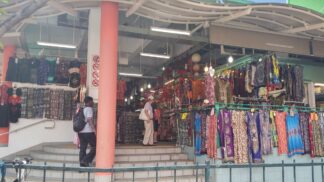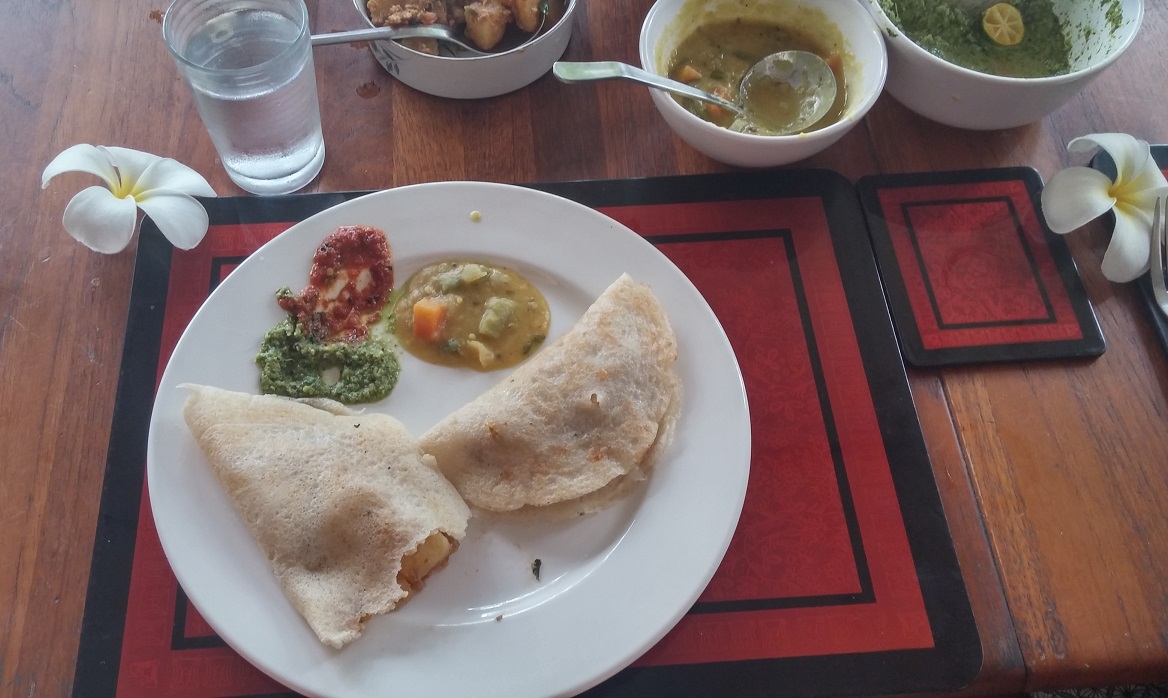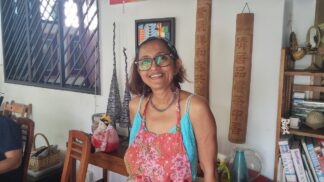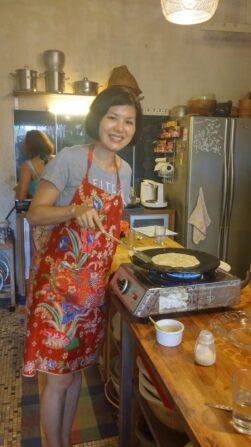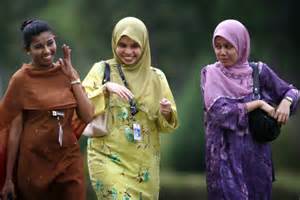A Culture within a City
With our new found enthusiasm for South Indian cooking that we learned in a great class the week before, Dani (a first friend who is from Australia) and I needed to find the ingredients that are essential to make these dishes. This means a trip to Little India, a place we’ve been hearing about since we both arrived. We met up at train station and went Little India’s wet market, Tekka Centre, first. We found a spice vendor who had much of what we needed to make the dishes we learned: fresh curry leaves, lime leaves, tamarind paste, ghee, chillis, cumin seed, fenugreek seed, mustard seed, cardamom pods, and a certain type of lentil. I picked up fresh grated coconut and cinnamon for Gene who likes to bake.
Then we went to the infamous Mustafa Centre. I have seen people on the train loaded down with bags from Mustafa’s, stuff to outfit a whole house. This place is enormous, like a trade show, 4-5 stories high and a catwalk across the street to the next block. It has everything, tons of jewelry, a pharmacy about a block long, mattresses… that is all I saw since we came upon the grocery store like just another department in this giant building. They had about 40 kinds of flour and grains, 5 aisles of honey, an aisle of dates… things that I didn’t know there was enough products in the world to have a dedicated aisle. Next time I need to do staples shop, I will need to go back there.
Later that week was Deepavali, a Hindu holiday lavishly celebrated in Little India. Indian Hindus make up about 10% or 500,000 people living in Singapore. Gene, her mom Merle, and I went to see Deepivali, Festival of Lights, which is a 5 day festival. It is an ancient Hindu festival celebrated in autumn every year that “spiritually signifies the victory of light over darkness, knowledge over ignorance, good over evil, and hope over despair.”
The Little India neighborhood is covered with lights, colorful arches and garlands. It is the custom to visit the temple to offer prayers and towards the evening light sparklers especially the children. The streets were lit up with lovely decorations that strongly remind me of small town USA at Christmas time. This year there were peacocks that lined the light poles. We went to two of the Hindu Temples that are open to the public and were permitted to take photos. The statuary is spectacular and fascinating. The temples were crowded with worshippers.
“Today, Hindus pray to the Goddess Lakshmi, the goddess of light and prosperity, and celebrate by wearing colourful clothes and decorating their bodies, particularly their hands and arms, with henna tattoos. Many areas of Singapore are decorated for Deepavali but Little India especially becomes more alive and alight than ever, particularly in Serangoon Road. celebrating this festival and the streets become decorated with colorful arches, lights and many bazaars. In the bazaars, the stalls are decorated with fragrant flowers, garlands, oil lamps and beautiful saris with gems and delicate patterns.Before Deepavali, homes are cleaned throughout and decorated inside and out with clay lamps called diyas, flowers, beautiful fabrics and colourful powders making designs called rangolis in and around the houses.
During the festival, prayers are offered in thanks and to request future blessings. Homes and streets become happy and colourful and full of the aromas of foods like Gajar Halwa made with carrots and milk, Dahi-bhalle – fried lentil balls served with yoghurt and chutneys – and desserts like Gulab Jamun made with cinnamon and cardamom, and Besan Ke Ladoo, which are dessert balls made from besan, ghee, sugar and nuts.”
Afterward, we went to eat at the only French Restaurant in Little India (…a French chef married a Singaporean woman). We ate there because there are lots of excellent Indian restaurants all over Singapore we have enjoyed and hardly any French ones!
Below is Sri Veeramakaliamman Temple is one of Singapore’s oldest Hindu temples.

Susan with Ruqxana, cooking teacher, making Indian dosai

Sri Veeramakaliamman Temple

Sri Veeramakaliamman Temple

Sri Veeramakaliamman Temple

Sri Veeramakaliamman Temple

Vendors before opening

Sreet decorations

Street at night

One of many shopping streets

Newspaper seller

We ate at the only French Restaurant in Little India



























